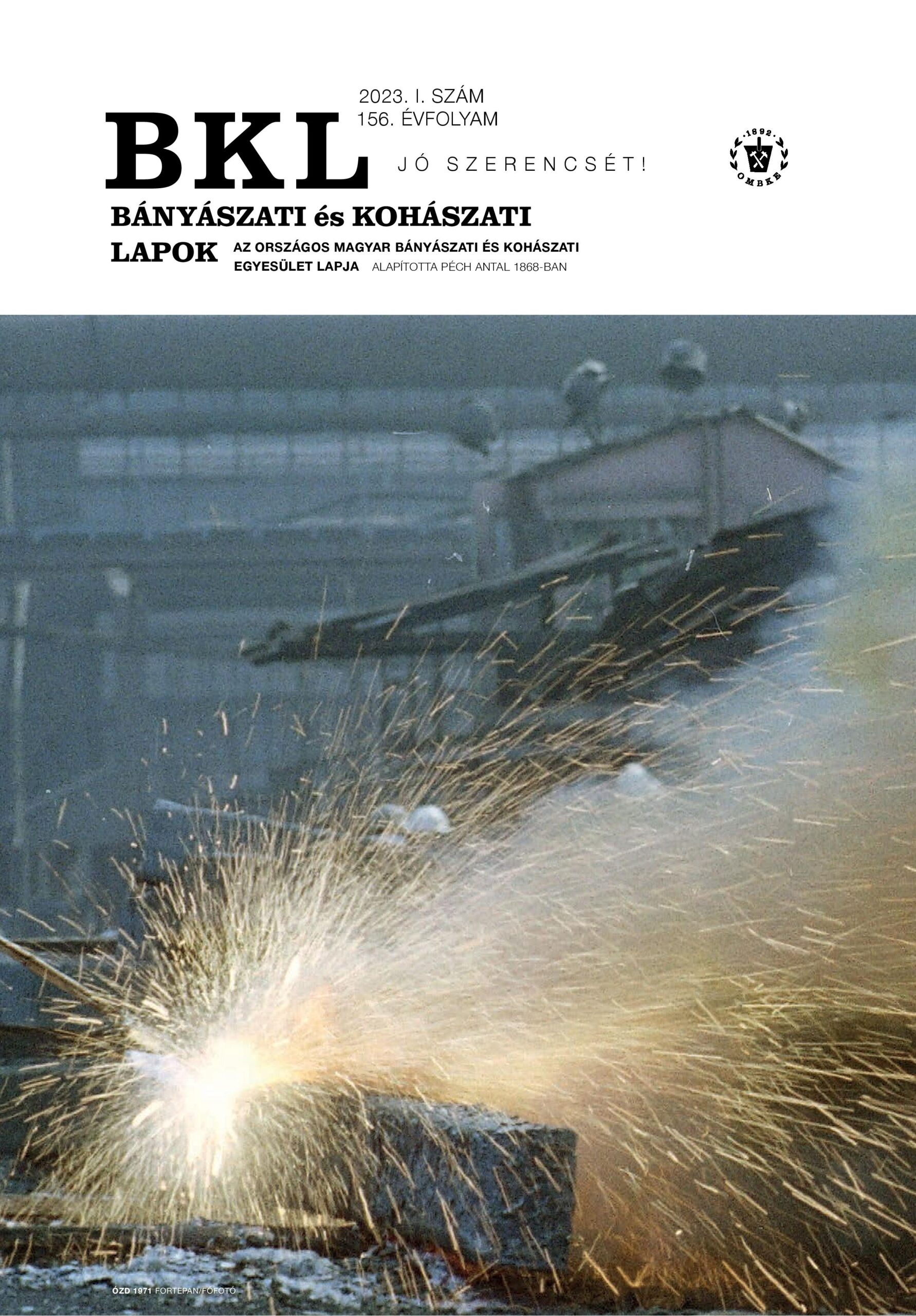Complex evaluating the results of monitoring of movement of the inner waste rock dump in Bükkábrány Mine
Abstract
The study was written as part of a gained project in the frame of the University of Miskolc’s 2020 Higher Education Institutional Excellence Program (HEIEP). The research work focused on a waste rock dump, in narrower sense, on monitoring of movements of the waste rock dump; the related modern survey techniques; and the processing and evaluation of the measuring results. The inner waste rock pile of Bükkábrány Mine was selected as a test area, in connection with which, relating to the established monitoring point system, GPS observations have been regularly carried out in the mine for years. In our article, based on our annual complex data processing results for the 2018–2020 periods, we also performed a short comparative evaluation in order to get to know the nature of the motion phenomenon occurring in one of the motion test zones (II.) of the waste dump as reliably as possible. Now let’s look at the content of our study in a little more detail! During the general presentation of waste rock piles, we reviewed their occurrence and appearance, and briefly touched on erosion and the risk of landslides. We examined the domestic legal environment for waste dumps and several alternatives for their recyclability. This was followed by a concise description of the working process of monitoring of movements and the survey techniques that can be used for it, which are already routinely used in mine surveying practice, and the new ones which will be introduced as a result of technological development as well. Then we turned to the main body of our study on monitoring of movements carried out in the test area, presenting waste rock pile surface itself and its design; the survey method (GPS technique) used for the research; the motion test zones created in the waste rock dump; and the monitoring points included in them. To the complex processing of monitoring of movements we used a graphical procedure on the one hand, and a statistical analysis on the other hand. For both test methods, we used the determined coordinates of all measured points included in the research work in all three years. The two evaluation procedures were completely similar in that they focused on the relationship between change (possible movement) and time. In the graphical process, we created an Excel table for each test point, which contains coordinate changes / relevant motion characteristics. Using the data contained in it, four types of graphs were made as a function of time. In the second part of the complex evaluation, we used a statistical analysis/test, following the individual steps required for its practical implementation. Summarizing our study the following can be briefly stated about its results. At the beginning of our article, we dealt with waste rock dumps and monitoring of movements in general. After that, we turned to the main body of our research work, the motion analysis of the technically arranged area of the inner waste rock pile of the Bükkábrány, Mine Mátrai Power Station Ltd. Taking the results of the carried out complex evaluation based on regular GPS measurements of the monitoring points established on the waste rock dump into consideration, we made decisions regarding immobility and motion. The aggregated results of his statistical tests of the studied monitoring points for 2018–2020 years with the marked annual changes and the combined evaluation of their graphic processing functions showed how the decision about the movement phenomenon changed in relation to which monitoring point and which coordinate.
References
https://hu.wikipedia.org/wiki/Medd%C5%91h%C3%A1ny%C3%B3
Végh Viktor: Meddő vagy haszonanyag? Bányajog blog, 2017. szeptember 29.
Dr. István Havasi: Monitoring and evaluation of ground and building movements. Training and research working paper, Miskolc, 2002, Bolyai János Scholarship (1999-2002).
Kleiber Márk - Dr. Havasi István - Konkoly Ádám: Bányamérési munkák a Mátrai Erőmű Zrt. Bükkábrányi Bányaüzemében. Bányászati és Kohászati Lapok, 2015, 148(2), 7-14.
Kleiber Márk: A MERT Zrt. Bükkábrányi Bánya geodéziai felmérésének és a mérések feldolgozásának egymást kiegészítő tevékenységi szakaszai. Diplomamunka, 2016. Konzulens: Dr. Havasi István - Konkoly Ádám
Dr. Havasi István - Csörgits Péter: A hasznosi völgyzárógát magassági értelmű mozgásvizsgálata. A Miskolci Egyetem Közleményei, Bányászat, 79. kötet, Miskolci Egyetemi Kiadó, 2010, 155-163. HUISSN 1417-5398
Dr. Detrekői Ákos: Geodéziai mérések matematikai feldolgozása. Egyetemi jegyzet, BME, 1987.
Dr. Havasi István - Kleiber Márk: Meddőhányó mozgásvizsgálata a Mátrai Erőmű Zrt. Bükkábrányi Bányaüzemében, Műszaki Tudomány az Észak-kelet Magyarországi Régióban Konferencia, Konferencia kötet, Debrecen 2019., ISBN 978-963-7064-38-8.



